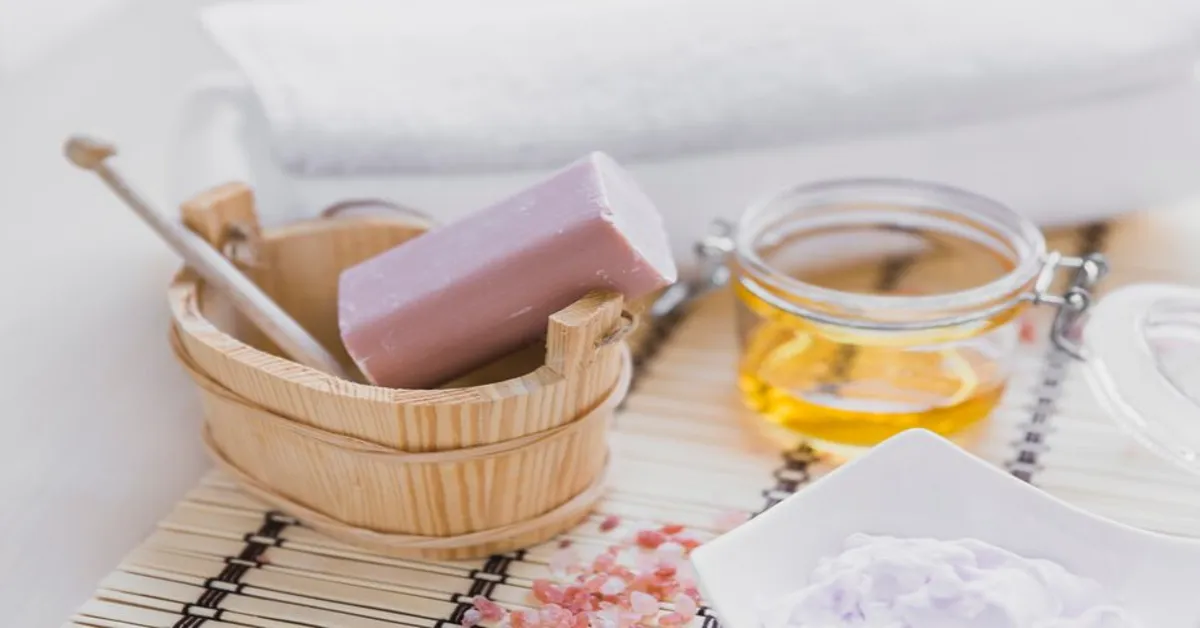Soap massage is a unique and luxurious body care treatment that combines the cleansing properties of soap with the therapeutic techniques of massage. Unlike traditional massage methods that use oils or lotions, soap massage uses a lather made from natural soap to create a soothing and moisturizing experience. This treatment has been growing in popularity in spas, wellness centers, and even home care routines due to its wide range of benefits for both the body and mind.
In this comprehensive guide, we will explore the origins of soap massage, its benefits, the various techniques used, the different types of soap available, and how to incorporate soap massage into your personal care routine.
Origins of Soap Massage
Soap massage has roots in ancient bathing traditions. The idea of using soap during a massage can be traced back to the Roman and Turkish baths, where attendants would cleanse the skin with soap and exfoliate the body using a rough cloth or brush. In these cultures, bathing was not just a means of hygiene but a social and ceremonial event. The use of soap in massages allowed for the removal of impurities from the skin while also providing a relaxing experience.
In recent years, soap massage has evolved to become more refined and luxurious. Many modern soap massages are performed in soap massage specialized hammams (Turkish bathhouses) or spas that recreate the ancient ritual in a serene and indulgent environment. The massage techniques are carefully choreographed to work with the lather, creating a deep sense of relaxation and rejuvenation.
The Benefits of Soap Massage
Soap massage offers a myriad of benefits for the body, mind, and skin. Here are some of the key advantages of incorporating soap massage into your wellness routine:
1. Deep Cleansing
Soap massage provides a deep cleanse for the skin. The soap lather helps remove dirt, oils, and dead skin cells that accumulate on the skin’s surface, leaving the skin feeling soft, smooth, and refreshed. This deep cleansing action can also help to prevent acne and other skin issues caused by clogged pores.
2. Exfoliation
In addition to the cleansing properties, soap massage often involves exfoliation. This can be done using a variety of tools such as a loofah, exfoliating gloves, or a traditional kese (a rough cloth used in Turkish baths). Exfoliation helps to slough off dead skin cells, promoting the growth of new, healthy skin and improving the overall texture of the skin.
3. Improved Circulation
The massaging action during a soap massage stimulates blood flow, which can improve circulation. This increased circulation delivers more oxygen and nutrients to the skin and muscles, promoting faster healing and rejuvenation. Improved circulation can also help reduce swelling and inflammation in the body.
4. Muscle Relaxation
Soap massage is excellent for relieving muscle tension and pain. The warm lather and soothing massage strokes help to relax the muscles, making it an ideal treatment for people who suffer from chronic pain, muscle stiffness, or tension headaches. The relaxation of the muscles can also help improve flexibility and range of motion.
5. Stress Relief
Like any good massage, soap massage has the ability to reduce stress and promote mental relaxation. The combination of soothing soap lather, gentle massage techniques, and calming scents can help ease anxiety, improve mood, and leave you feeling refreshed and rejuvenated.
6. Hydration and Moisturization
Many soaps used in soap massage are made with natural oils and ingredients that are deeply hydrating. These ingredients help to lock in moisture, leaving soap massages the skin feeling nourished and supple. Soap massage is particularly beneficial for people with dry or sensitive skin.
Techniques in Soap Massage
Soap massage can be performed using a variety of techniques depending on the desired outcome. Here are some of the most common methods used in soap massage:
1. Foam Massage
One of the most popular techniques in soap massages is foam massage. In this method, the soap is whipped into a thick, luxurious foam, which is then applied to the body in smooth, flowing strokes. The foam creates a cushion between the hands of the masseuse soap massage and the client’s skin, allowing for a gentle and relaxing massage. This technique is ideal for stress relief and relaxation.
2. Exfoliating Massage
An exfoliating soap massage involves the use of a textured tool such as a loofah, brush, or exfoliating gloves. After the soap is applied to the body, the tool is used to scrub away dead skin cells, leaving the skin smooth and refreshed. This technique is particularly effective for people who want to improve the texture of their skin or treat rough patches.
3. Deep Tissue Soap Massage
For those who prefer a more intense massage, deep tissue soaps massage is an option. In this technique, the massage therapist applies firm pressure to target deeper layers of muscle and connective tissue. The soap lather helps to reduce friction, allowing the therapist soap massage to work on knots and areas of tension without causing discomfort. This type of massage is beneficial for athletes or anyone suffering from chronic muscle pain.
4. Hot Soap Massage
Hot soap massage involves the use of warm or hot soap lather to enhance the relaxation experience. The heat helps to open up the pores, allowing the soap to penetrate deeper into the skin and providing a more thorough cleanse. The warmth also helps to soothe sore muscles and promote relaxation.
5. Aromatherapy Soap Massage
Many soaps massages incorporate aromatherapy by using soaps that are infused with essential oils. Aromatherapy soap massage can enhance the relaxation experience by stimulating the senses with soothing or invigorating scents. Lavender, eucalyptus, and chamomile are popular choices for their calming properties, while citrus and mint can provide a more refreshing and energizing experience.
Choosing the Right Soap for Massage
Not all soaps are created equal, especially when it comes to soaps massage. The type of soap used can significantly impact the overall experience and the benefits for your skin. Here are some things to consider when choosing soap for massage:
1. Natural Ingredients
Look for soaps made from natural ingredients such as plant-based oils, essential oils, and herbs. These soaps are generally gentler on the skin and less likely to cause irritation compared to soaps with synthetic fragrances or harsh chemicals.
2. Moisturizing Properties
If you have dry or sensitive skin, opt for a soap that contains moisturizing ingredients like shea butter, olive oil, or coconut oil. These ingredients help to hydrate the skin and prevent it from drying out during the massage.
3. Exfoliating Soaps
For an exfoliating massage, choose a soap that contains natural exfoliants like oatmeal, sea salt, or ground coffee. These soaps provide an extra layer of exfoliation, leaving the skin smooth and revitalized.
4. Aromatherapy Soaps
To enhance your soaps massage experience, consider using soaps infused with essential oils. Lavender, eucalyptus, peppermint, and tea tree are all excellent choices for their calming and healing properties.
5. Hypoallergenic Soaps
For those with sensitive skin or allergies, hypoallergenic soaps are a great option. These soaps are formulated to minimize the risk of skin reactions and are often free from fragrances, dyes, and other potential irritants.
How to Perform a Soap Massage at Home
While visiting a spa for a soap massages is a luxurious experience, it’s also possible to perform a soap massage at home with the right tools and techniques. Here’s a step-by-step guide to help you get started:
1. Choose the Right Soap
Select a soap that suits your skin type and desired benefits. If you’re unsure, a mild, moisturizing soap made from natural ingredients is a good place to start.
2. Prepare Your Space
Create a relaxing environment by dimming the lights, playing soft music, and lighting some candles. Make sure your bathroom or massage area is warm and comfortable.
3. Lather the Soap
Use a loofah, sponge, or your hands to create a rich lather with the soap. If you prefer a foam massage, you can whip the soap into foam using a special soap whisk or net.
4. Apply the Lather
Apply the lather to your body in gentle, circular motions. Take your time and enjoy the process, paying special attention to areas that need extra care, such as rough or dry patches.
5. Massage the Body
Using your hands or a massage tool, gently massage the body. Start with light pressure and gradually increase as needed. Focus on areas where you hold tension, such as the neck, shoulders, and lower back.
6. Rinse Off
After you’ve finished the massage, rinse off the soap with warm water. Pat your skin dry with a soft towel and apply a moisturizer to lock in the hydration.
Incorporating Soap Massage into Your Routine
Soaps massage can be a wonderful addition to your self-care routine, whether you use it as an occasional treat or a regular part of your skincare regimen. Here are a few tips for making the most of your soap massages experience:
- Frequency: For most people, once a week is sufficient to enjoy the benefits of soap massage without over-exfoliating the skin. If you have sensitive skin, you may want to start with every two weeks and adjust as needed.
- Pairing with Other Treatments: Soaps massage can be combined with other treatments such as a facial, body scrub, or aromatherapy for a more comprehensive spa experience.
- Customizing the Experience: Feel free to experiment with different types of soap, scents, and massage techniques to find what works best for you. You can also customize your routine based on the season or your skin’s needs at any given time.
FAQs About Soap Massage
1. Is soaps massage safe for all skin types?
Yes, soap massage is generally safe for all skin types, but it’s important to choose a soap that is suitable for your specific skin type. If you have sensitive skin, opt for a hypoallergenic soap, and avoid harsh exfoliants.
2. How often should I get a soaps massage?
The frequency of soap massages depends on your skin type and personal preference. For most people, once a week is ideal. However, those with sensitive skin may want to limit soap massages to every two weeks.
3. Can I perform a soaps massage at home?
Yes, you can easily perform a soap massage at home with the right tools and techniques. Follow a step-by-step guide to ensure a relaxing and effective experience.
4. What types of soap are best for massage?
Natural, moisturizing soaps made with ingredients like olive oil, shea butter, and essential oils are best for soaps massage. Exfoliating soaps with ingredients like oatmeal or sea salt are ideal for removing dead skin.
5. What are the benefits of soaps massage over traditional massage?
Soap massage combines the benefits of deep cleansing and exfoliation with muscle relaxation and stress relief, offering a more comprehensive body treatment than traditional oil-based massages.
6. Can soap massage help with dry skin?
Yes, soap massage can help with dry skin, especially if you use a moisturizing soap with natural oils. Be sure to follow up with a hydrating lotion or cream to lock in moisture.










